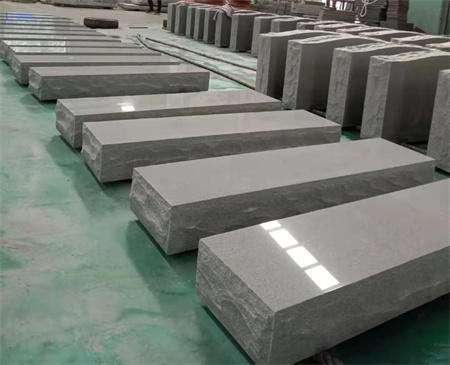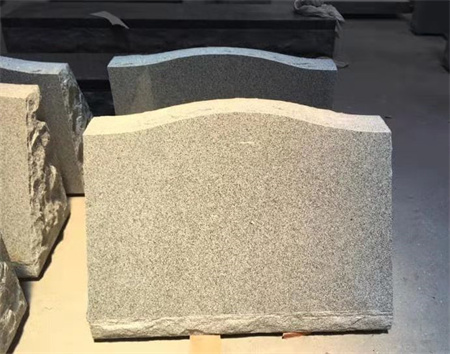How to Use Negative Space in Granite Headstone Designs

How to Use Negative Space in Granite Headstone Designs
When designing a granite headstone, every detail counts. From the choice of stone to the inscriptions, each element plays a role in creating a meaningful tribute. One often overlooked aspect in headstone design is the use of negative space. While the term might sound like something that should be avoided, it is, in fact, a powerful tool that can bring elegance and depth to a headstone. Negative space refers to the empty or uncarved areas around and between the design elements. Used effectively, it can enhance the visual impact, create balance, and offer a sense of serenity.
Granite, with its timeless appeal and durability, provides an ideal canvas for this technique. As a material known for its permanence, it can serve as a lasting tribute, and the strategic use of negative space can make that tribute even more striking. Whether you’re designing a simple memorial or a more elaborate piece, understanding how to incorporate negative space can transform your headstone into a work of art.
Creating Balance and Focus
One of the primary benefits of negative space in headstone designs is its ability to bring balance and focus. By leaving areas of emptiness around the primary design elements, the viewer’s eye is naturally drawn to the most important features. For instance, a carefully placed design like a cross, tree, or even a flower can be made to stand out more dramatically if surrounded by enough negative space.
This technique can be particularly effective in preventing the design from becoming too cluttered. In a design full of intricate carvings, too many elements can overwhelm the viewer. Negative space creates a visual “breathing room” that allows each part of the design to stand out without competing for attention. This can create a peaceful, harmonious aesthetic that reflects the solemn nature of a memorial.
Enhancing the Symbolism
Negative space also offers an opportunity to infuse the design with symbolism. A well-placed blank area can serve as a visual metaphor. For example, a dove or angel design might be carved with wings extending outward, leaving the space between the wings untouched, evoking a sense of flight or freedom. In another instance, a tree carved into the stone might have empty spaces between its branches, symbolizing the connection between the earthly and spiritual worlds.
These subtle design choices allow for more profound interpretations of the headstone’s message, creating a space where the viewer can pause, reflect, and draw personal connections to the design. This subtlety is what makes negative space so powerful—it gives the observer a moment to engage with the artwork in a deeper way.
Adding Depth and Dimension

For example, a portrait of a loved one, when paired with areas of negative space, can appear as if it is emerging from the stone, enhancing its presence and emotional impact. Similarly, incorporating negative space around a landscape scene—whether it’s a sunset, mountains, or the ocean—can create a sense of vastness and perspective, making the scene feel more expansive and infinite.
Complementing the Landscape
Granite headstones are often placed in cemeteries or memorial gardens, where the surroundings contribute to the atmosphere of the site. Negative space in a headstone design can complement the natural landscape and help the memorial blend seamlessly into its environment. For example, a headstone designed with flowing lines and open spaces can echo the shapes of nearby trees, grasses, or hills, tying the memorial to the land while still maintaining its individuality.
In contrast, a headstone without negative space might appear more rigid or boxy, which could clash with the softness and natural curves of the landscape. Using negative space thoughtfully can make the memorial feel more at home in its surroundings, helping it to honor not only the person it commemorates but also the beauty of the place where it rests.

In recent years, minimalist design has become a popular trend in many aspects of art and architecture—and headstone design is no exception. Negative space plays a pivotal role in minimalist headstone designs, where simplicity and subtlety are prioritized. A minimalist headstone might feature only a few lines or a single symbol, but the way negative space is used around that symbol can make it incredibly powerful.
A single, clean-cut line can be emphasized through the empty space around it, or a small carving of an animal or plant can feel monumental when placed within a vast, open area of granite. For those who prefer a more contemporary or understated memorial, negative space offers a way to create something profound without relying on intricate details or excessive ornamentation.

Incorporating negative space into granite headstone designs isn’t just about creating something visually pleasing—it’s about creating a lasting, meaningful tribute that speaks both to the individual and to the environment around them. Whether through balance, symbolism, depth, or modern minimalism, negative space can turn a simple design into a work of art. By giving the elements of the headstone room to “breathe,” you allow the memorial to carry more weight and evoke a greater emotional response, making it not just a stone monument, but a personal expression of remembrance. So, next time you’re thinking about a headstone design, consider the power of negative space. It might just be the finishing touch that elevates the entire piece.